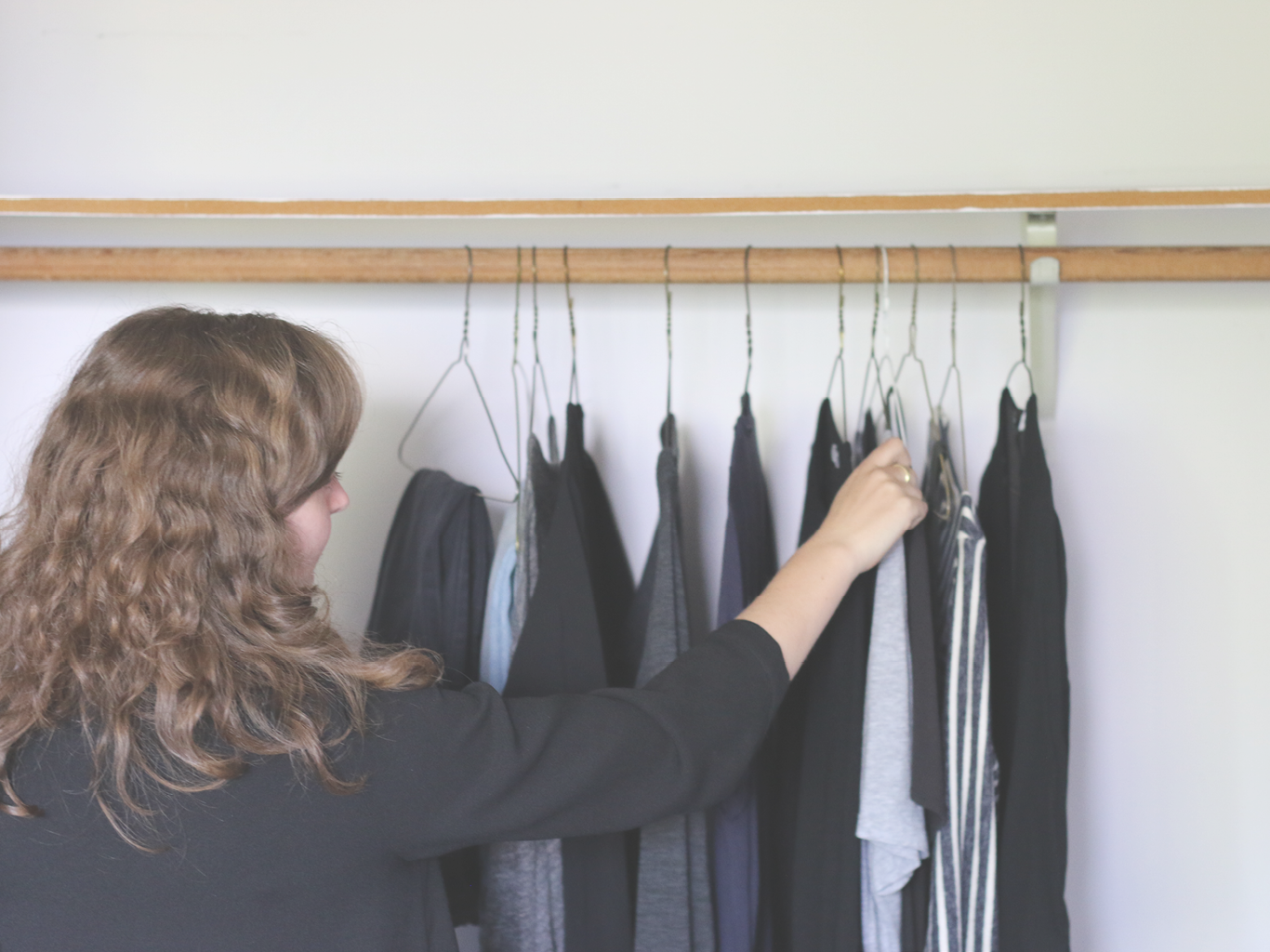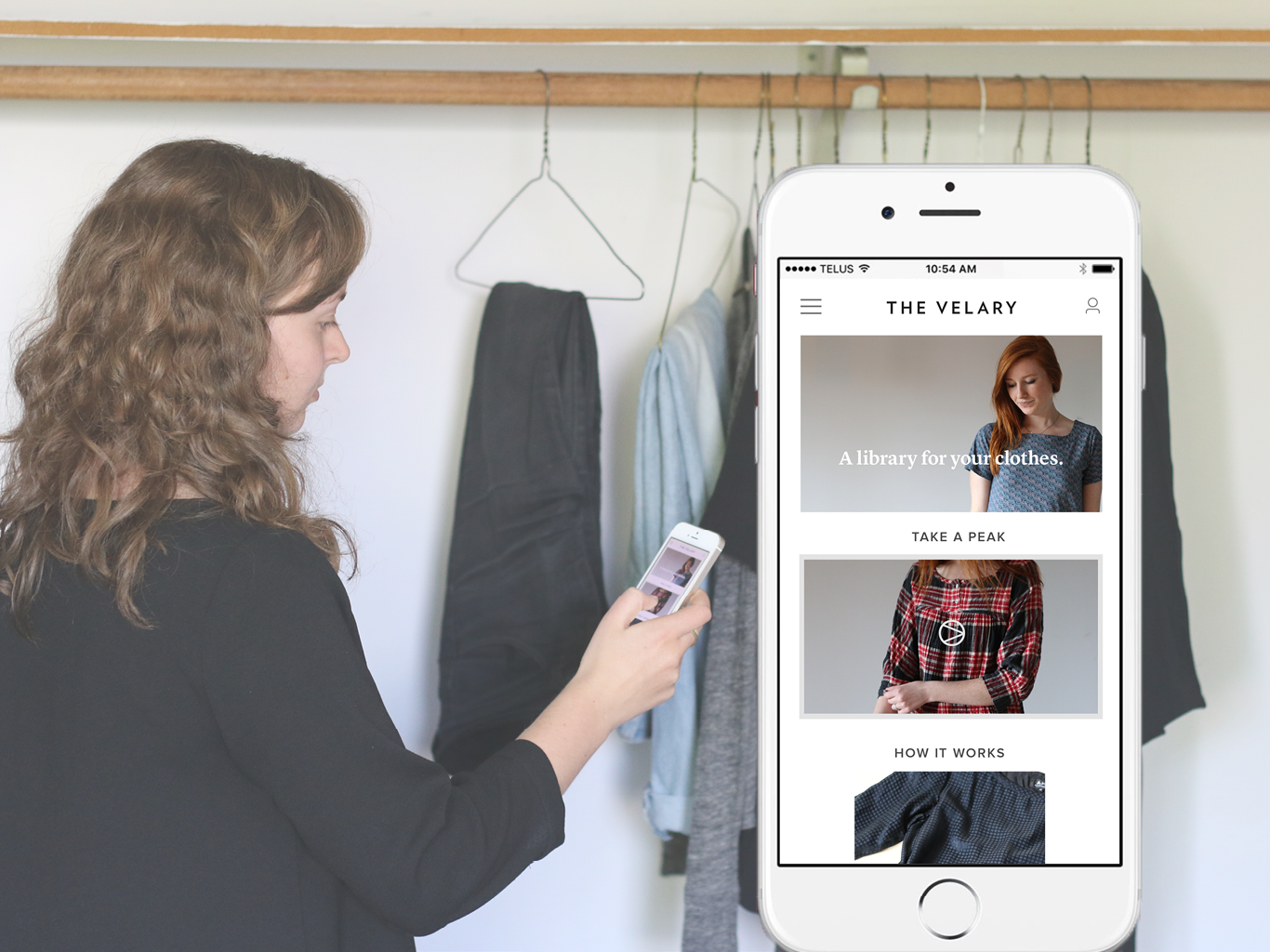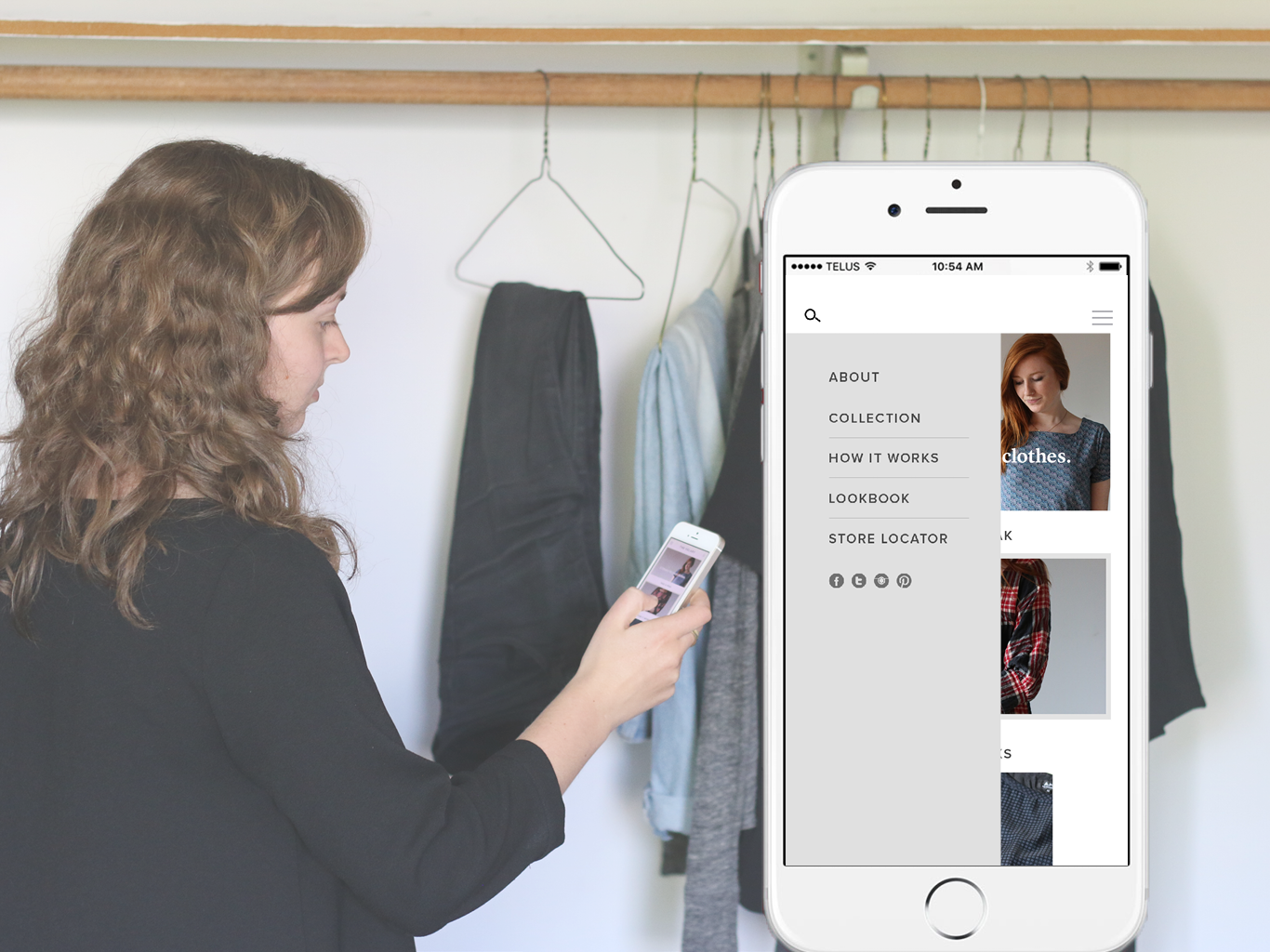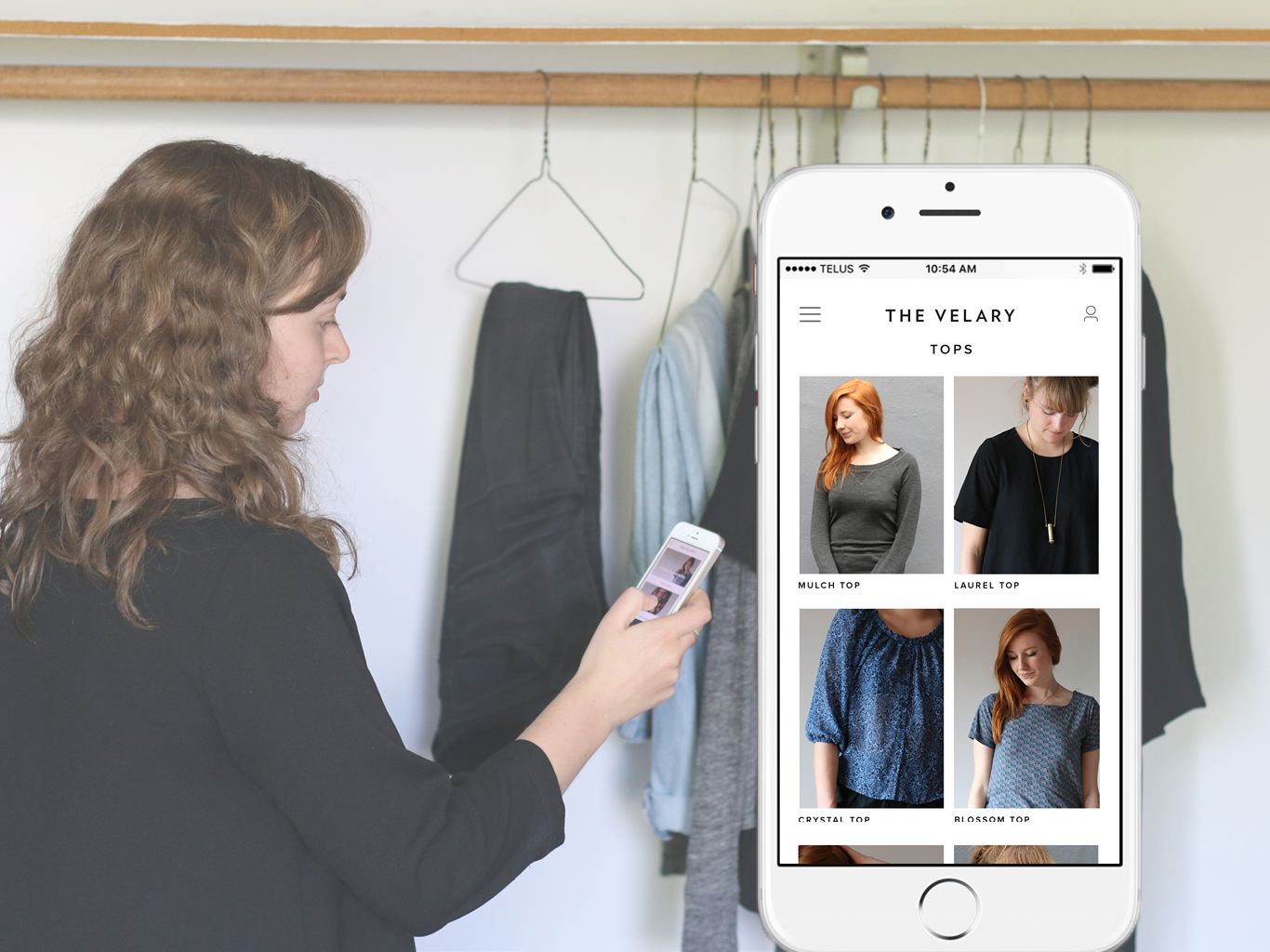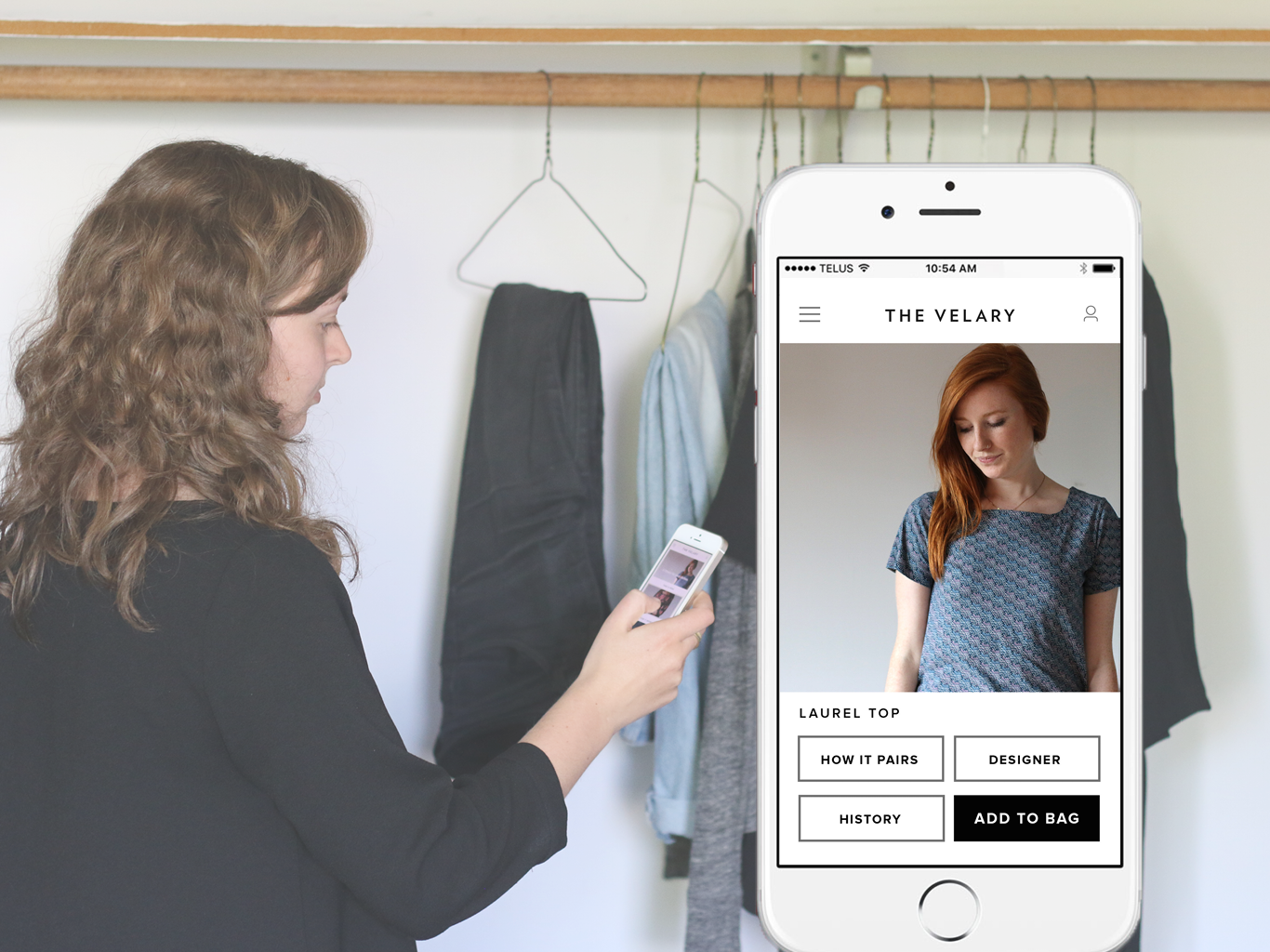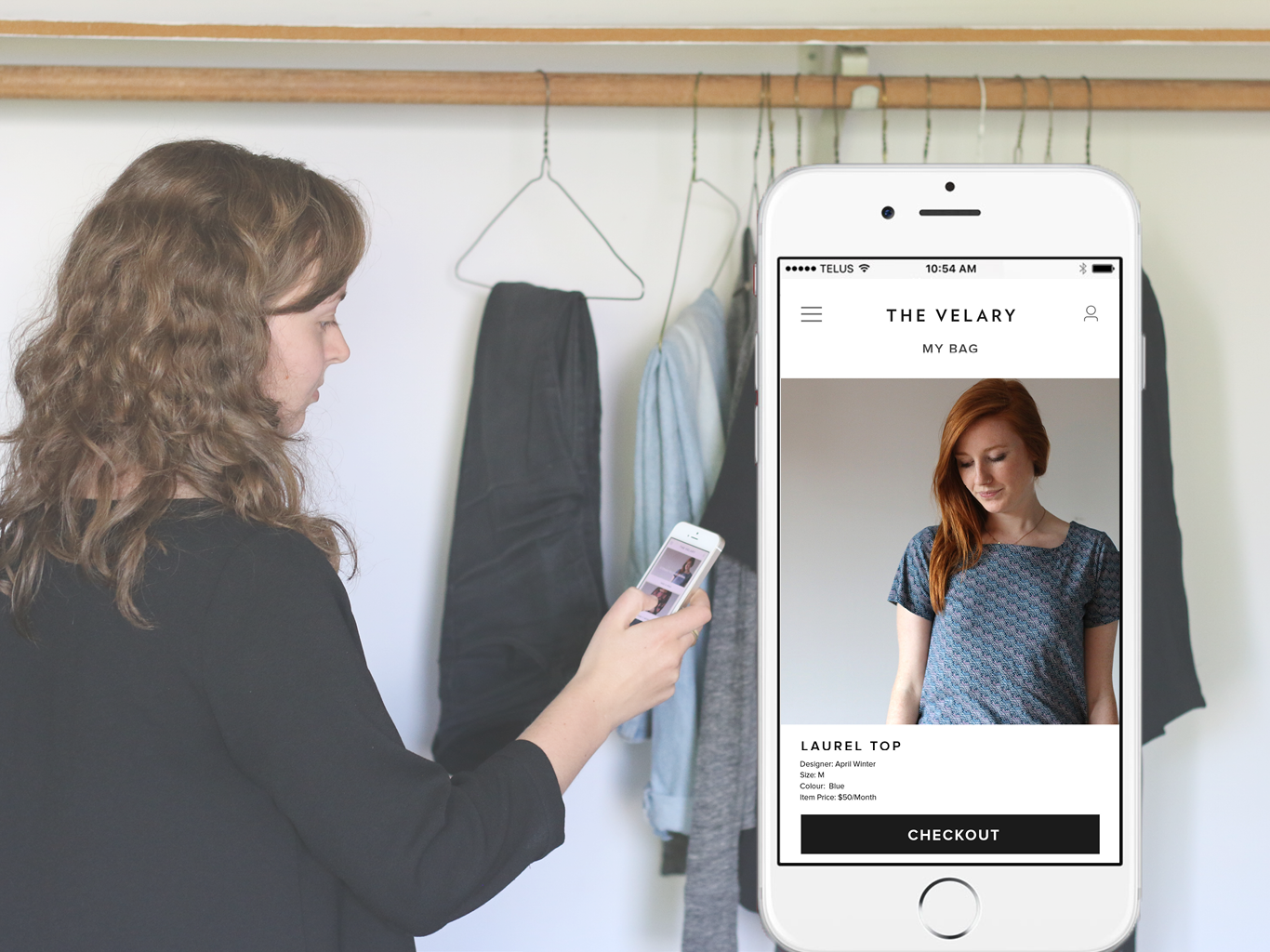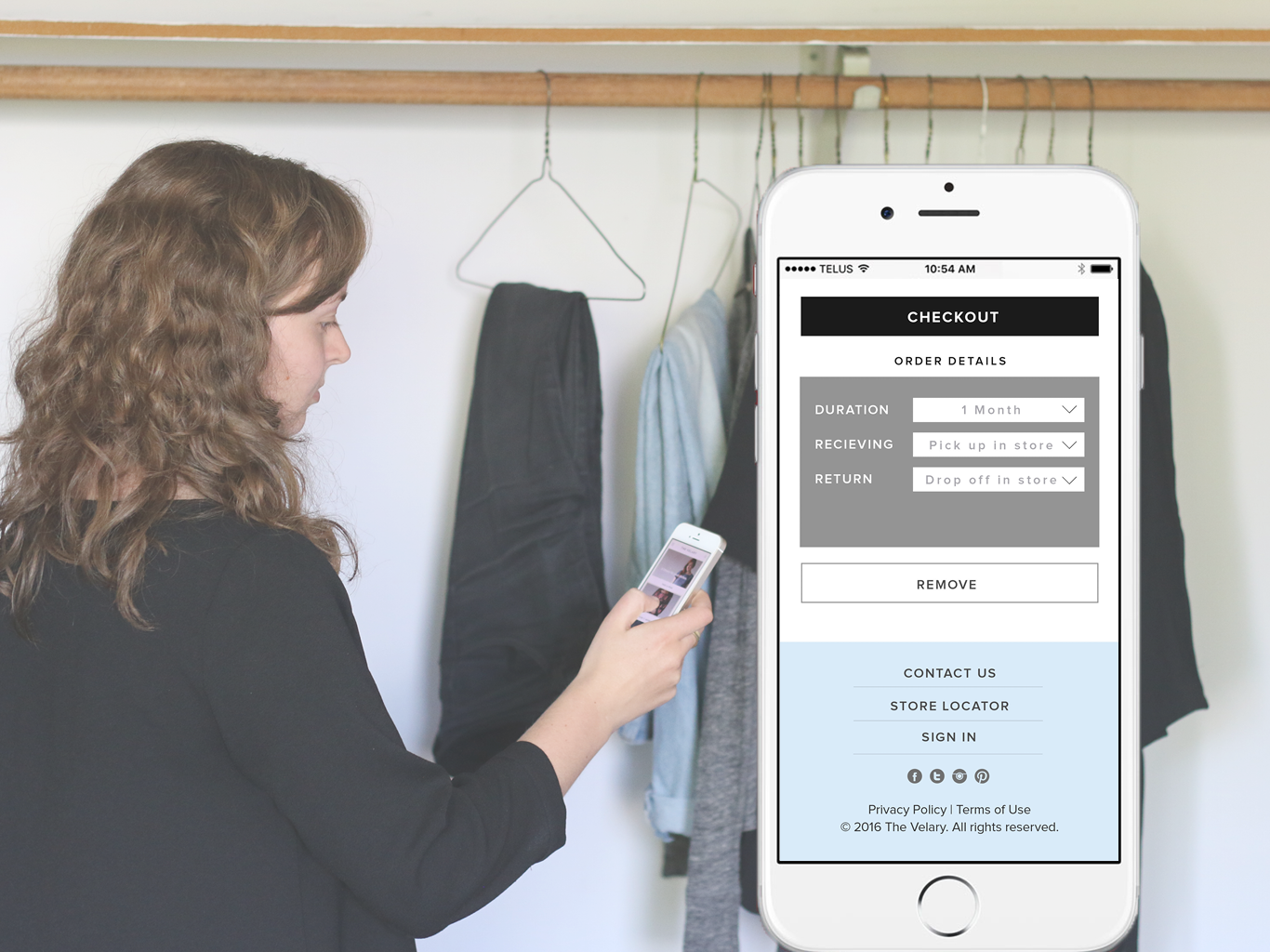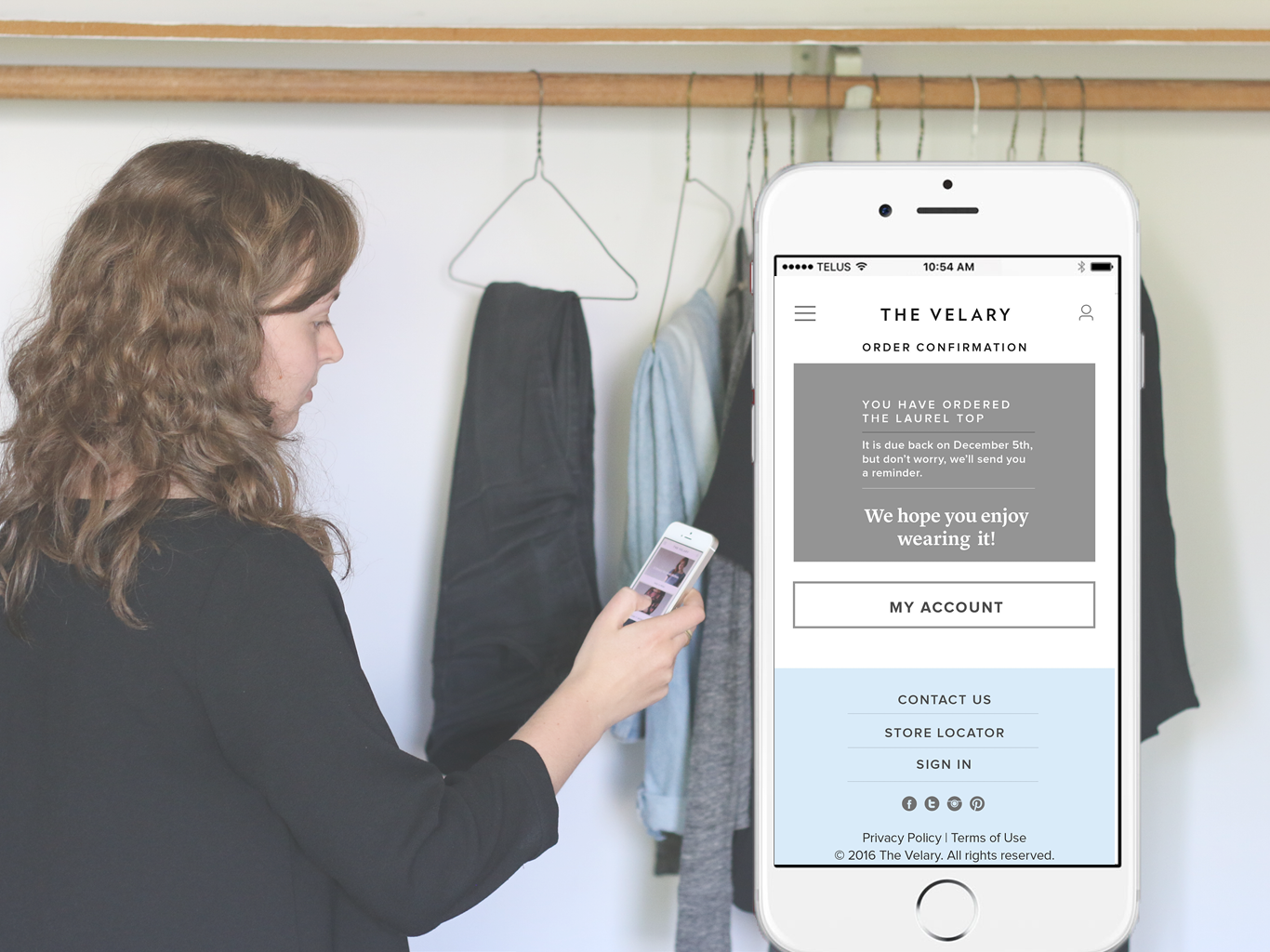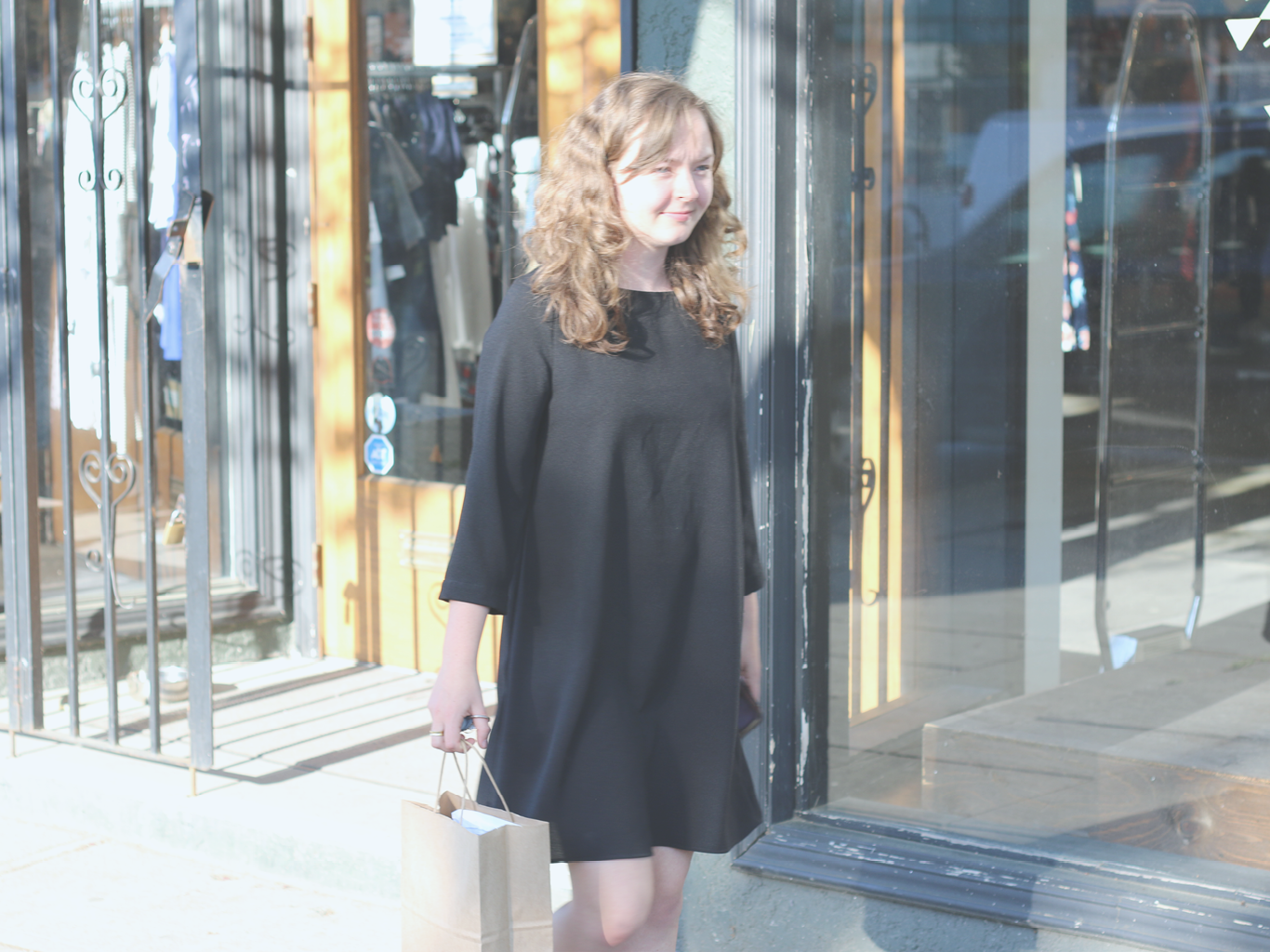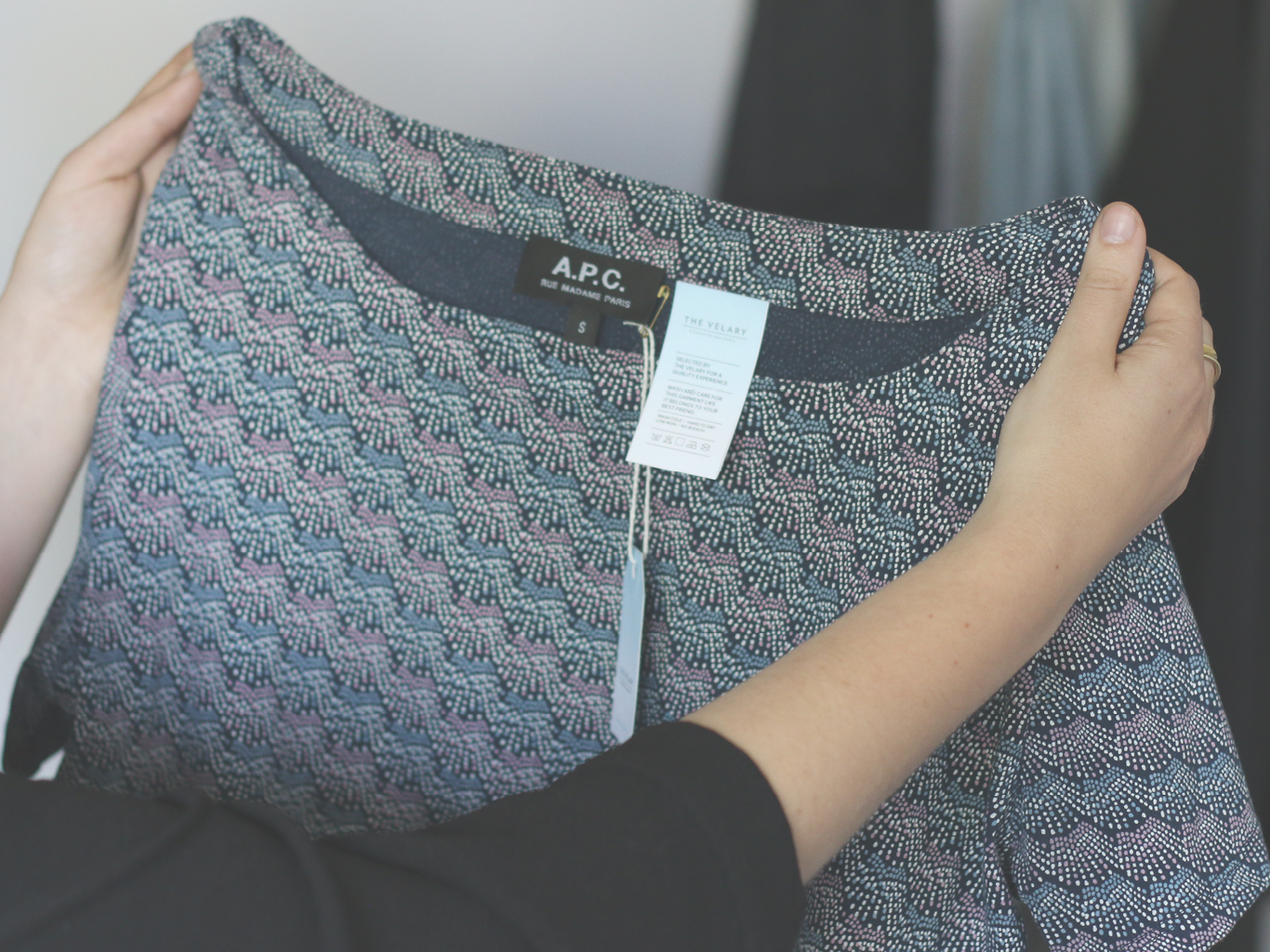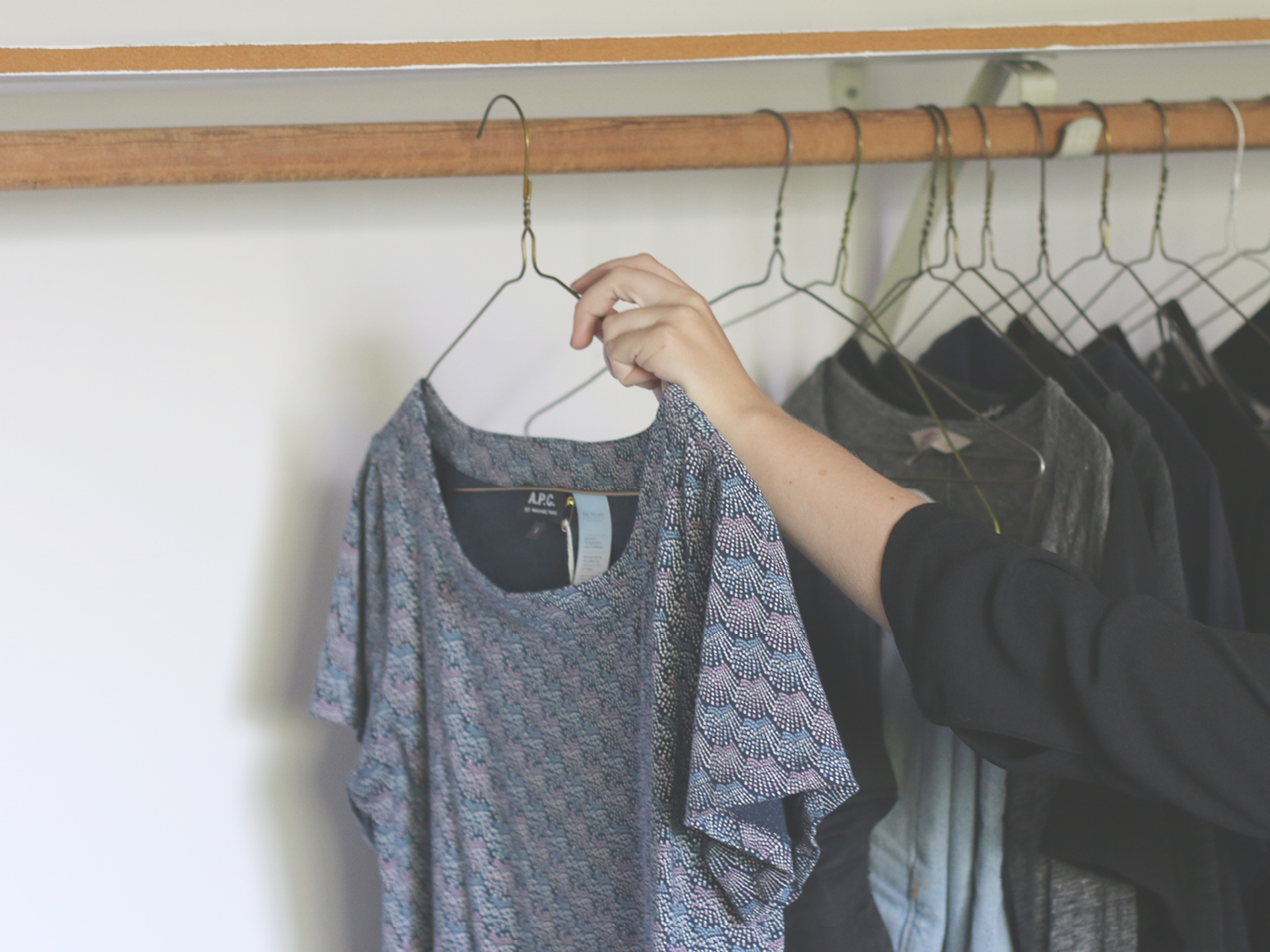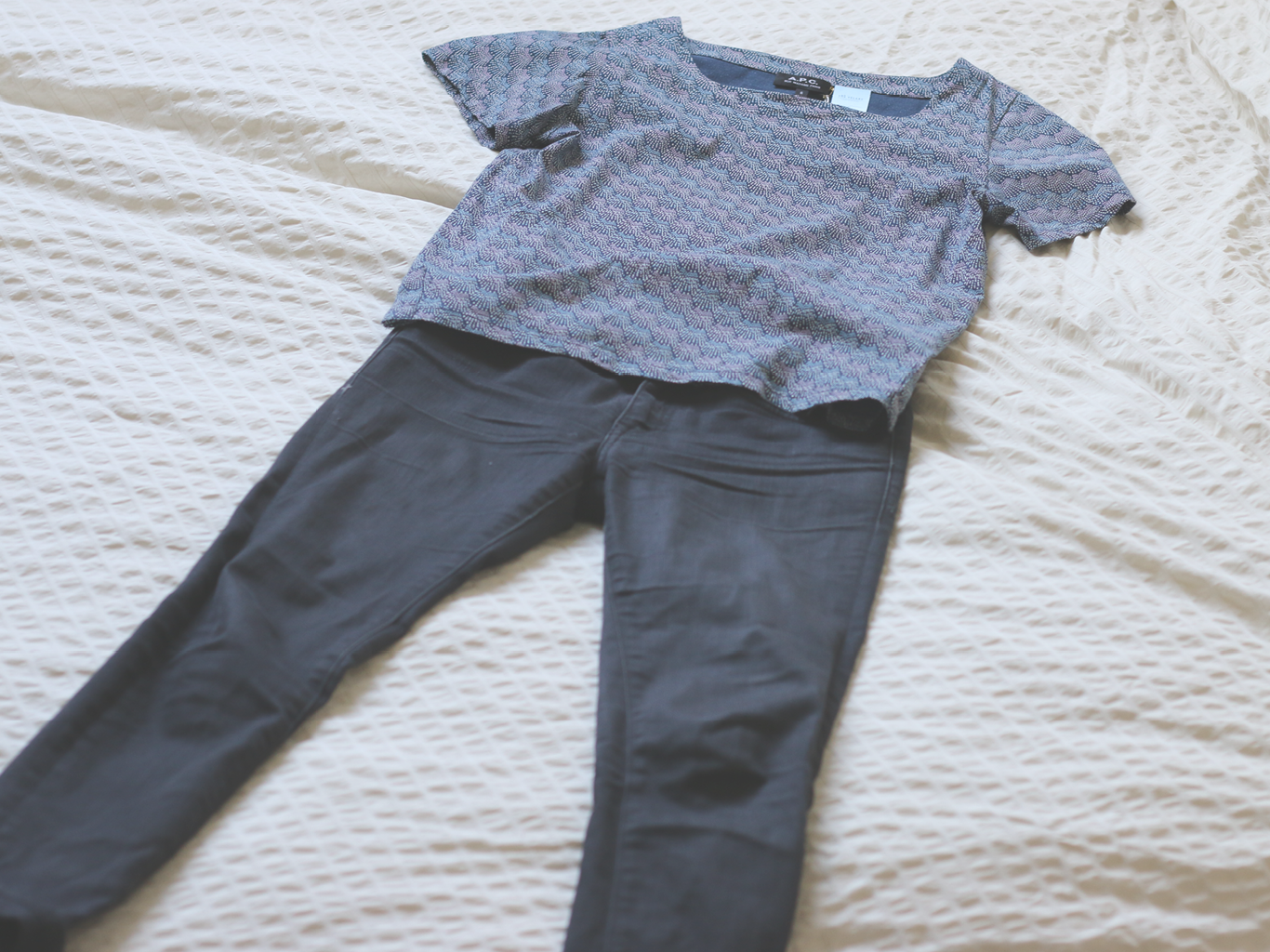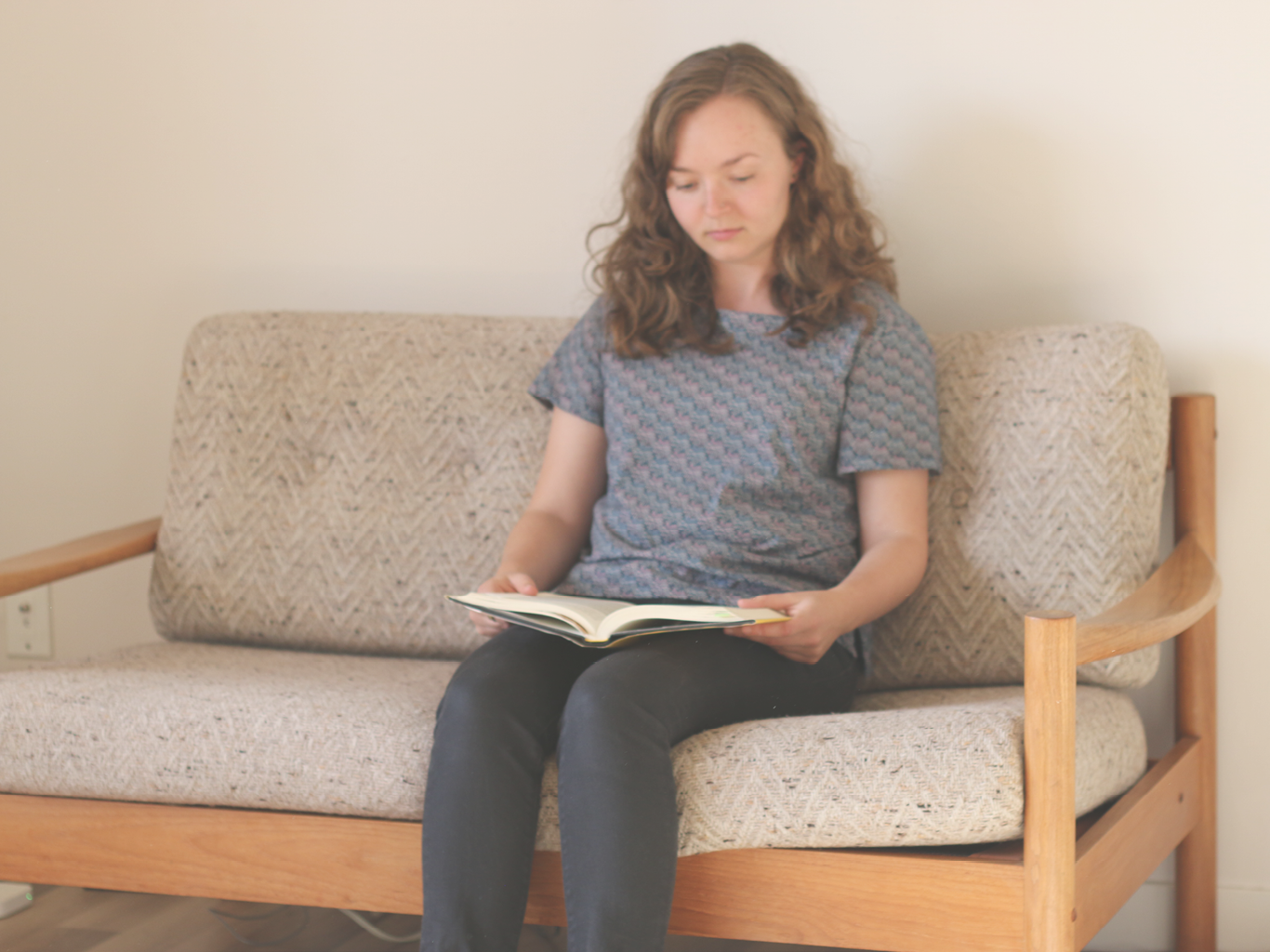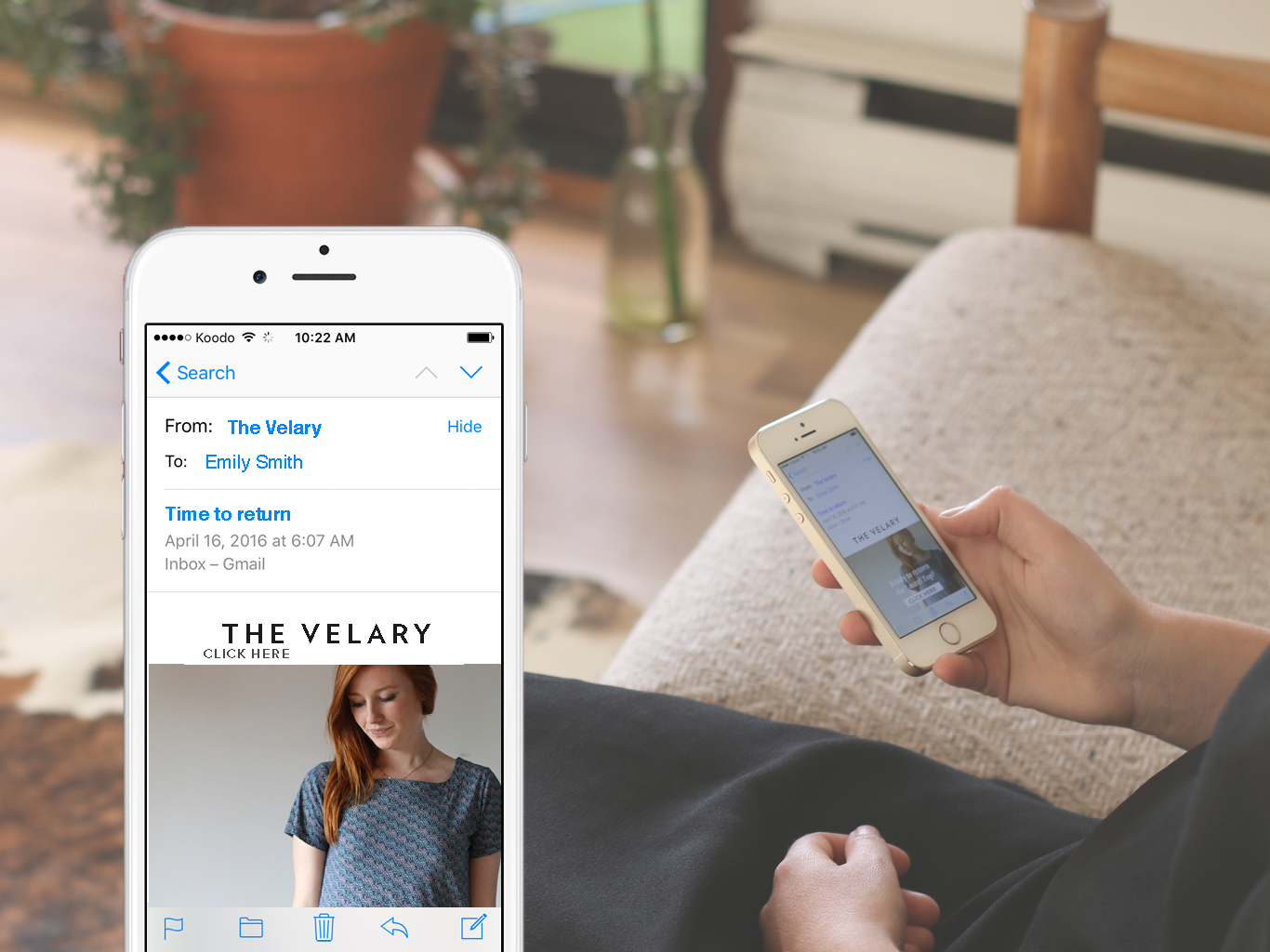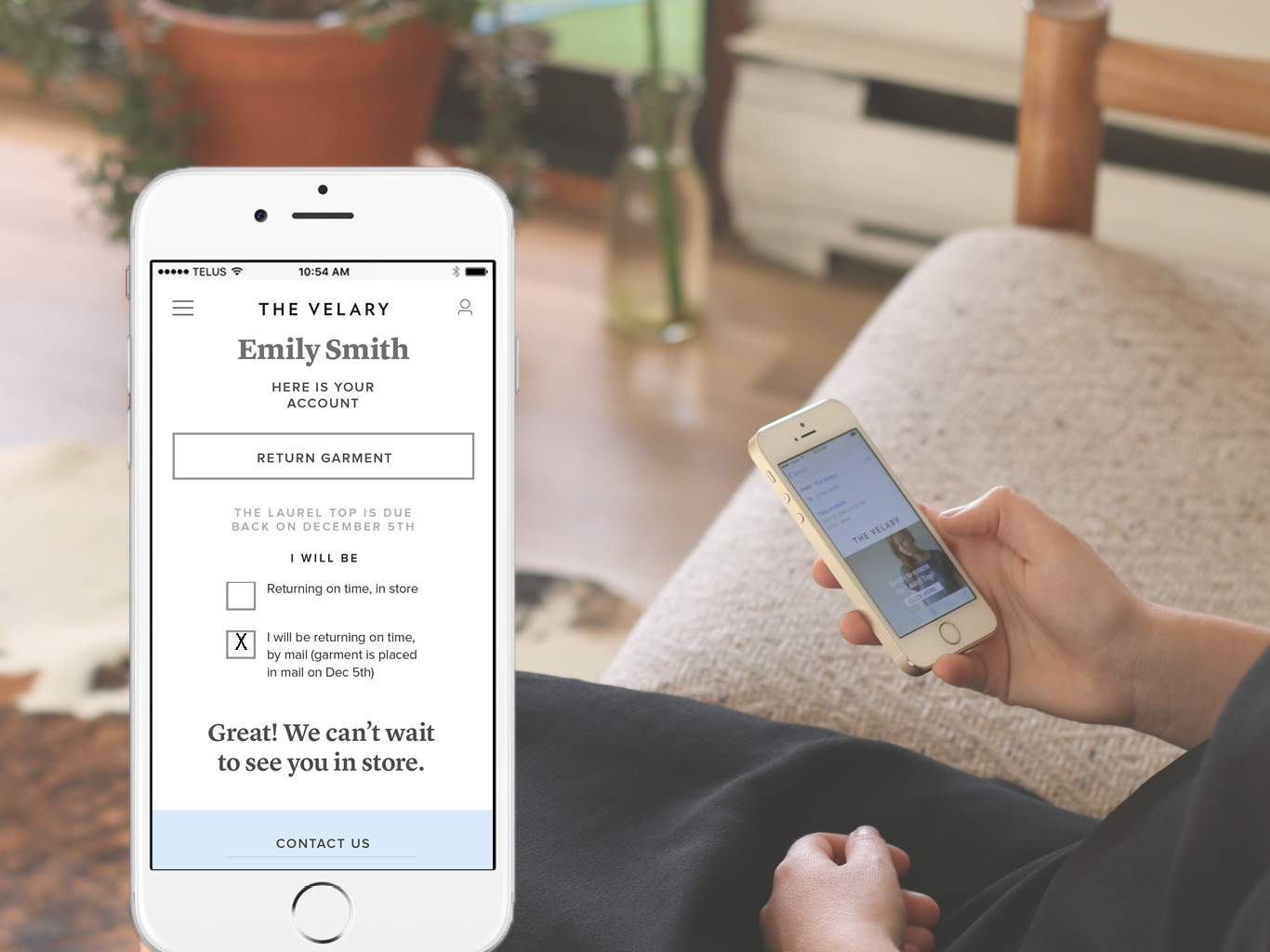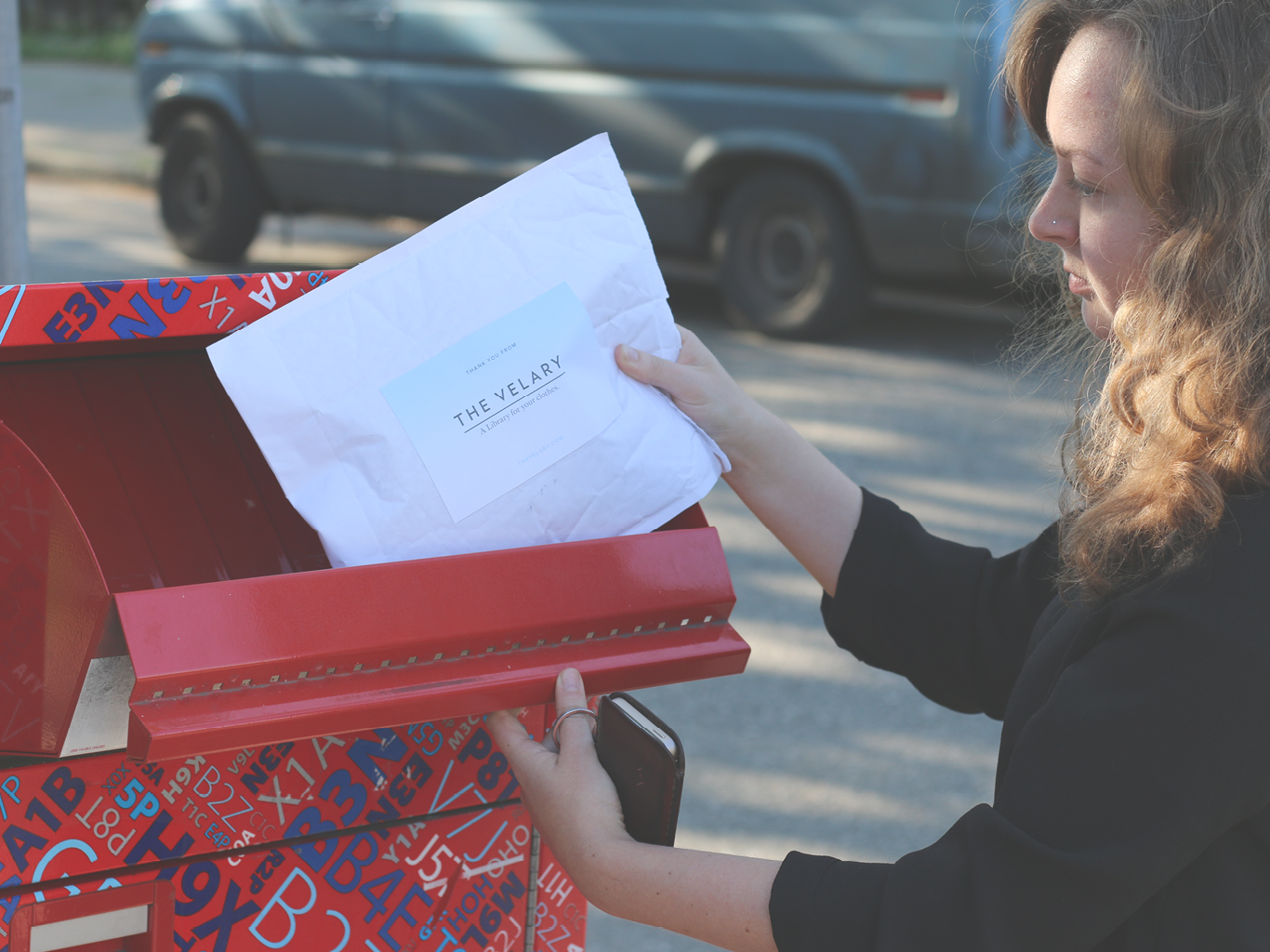SERVICE DESIGN
When approaching the consumption rates in the clothing industry it was necessary to employ a different model of design than the product centred fashion design that we currently practice. “The digital landscape of the information age has created radical enablers for new types of service delivery” (Polaine, 24, 2013). Addressing clothing through service design allows for an examination at the system around the clothing as well as the garments themselves. Designing clothing as a service permits us to provide clothing in the form of access rather than ownership, and addresses the need to be clothed, but does not have to engage in existing consumption models. While I often present the user journey in a linear fashion, the service is best described using a circular or cyclical framework. Where users are able to engage according to their own rate of renewal. This was prototyped through user scenarios, and video prototyping.
SERVICE MODEL AND CUSTOMER JOURNEY
The way that the user experience or journey plays out differs according to the individual. The process a user goes through with The Velary is repeatable, in whichever regularity the customer needs. This allows for personalization of process, including time between reservations, and duration of reservations. In combination with the renewal wardrobe the options for personalization become vast. A user may change the amount of garments they own, and have access to, along with how these items pair together. Each user archetype for example may shift the regularity of the cycle based on their preferences. Where the Trendy Trader, who is more inclined to stay on top of trends may wish to receive a garment at regular intervals, the CautiousConsumer would take long pauses between garment reservations. A customer may find that they relate to one of the user archetypes, or they may fall in between two preferences, they may also have different behaviours and routines in different contexts (eg. seasonally, or during life transitions). While The Velary draws from Minimalism as a guiding principle, to consider what we own and consume, it compliments that perspective with continuous possibility for shifts in preferences and routines, accommodating personalization and an ongoing sense of renewal.
VIDEO SKETCHES
In order to grasp how the two tiered wardrobe would work I used video sketches. This allowed me to act out the users actions and communicate how borrowing from The Velary will play out when you add the garments to your core wardrobe at home. This process also helped to develop visual communication cues which will be evident in the visual design, and future diagrammatic explanations of the service.
SHIFTING EXPERIENCE
How could we reduce the impact of the clothing industry, while providing unique and exciting experiences that will help users transition to less consumptive habits. How can we shift the experience from desire up-front to enjoyment throughout.
The existing shopping experience is riddled with peaks and valleys. There is an emphasis on pleasure during the longing and discovery phase when a user thinks "I want". Through the service model and subsequent customer experiences we are able to elevate pleasure to a more continuous and undulating flow, that resembles rolling hills, and removes highs and lows, while still moving the overall experience into a more positive level.
I translated user journeys and experiences, along with scenario based mapping into a service blueprint. This demonstrates the partners required and the back end processes in place to make each customer interaction and touchpoint function.
Applying the information from the above exercise into a service blueprint we start to see the interactions between different service layers, and which elements inform or trigger the next action.

